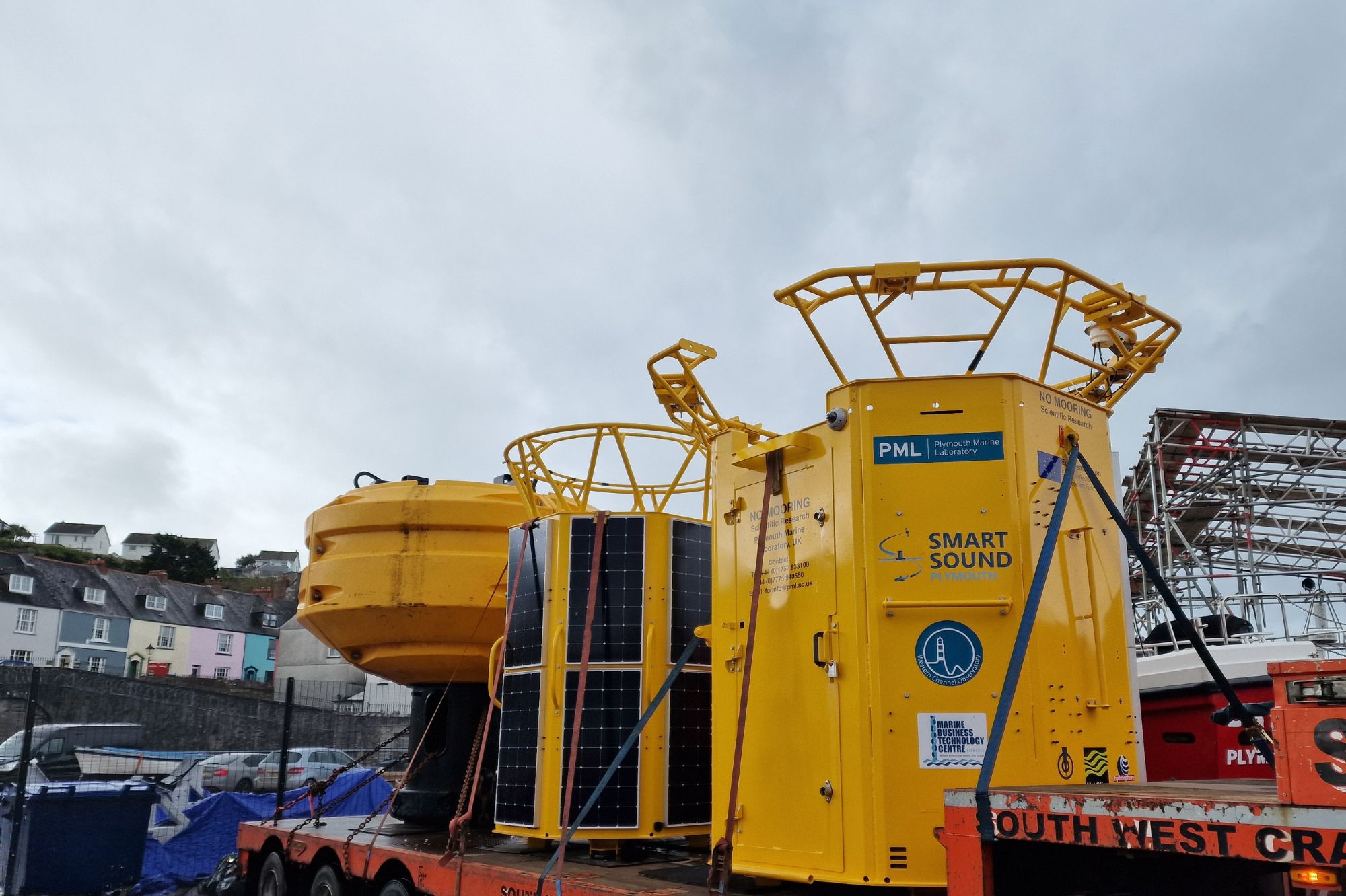There was a lot of activity at the laboratory recently as we moved two autonomous buoys to Turnchapel Wharf in Plymouth, the final stretch before deployment. One of the buoys was brought in earlier this year for planned upgrades, whilst the other is a brand-new addition, and has not yet been out on the water! Keep reading to find out more…
Whilst usually bobbing approximately six nautical miles south of Plymouth in 55 metres of water, the L4 autonomous buoy was taken to the lab for planned upgrades back in February this year.
The buoy has since been installed with a new winch system developed by a specialist manufacturer in France.
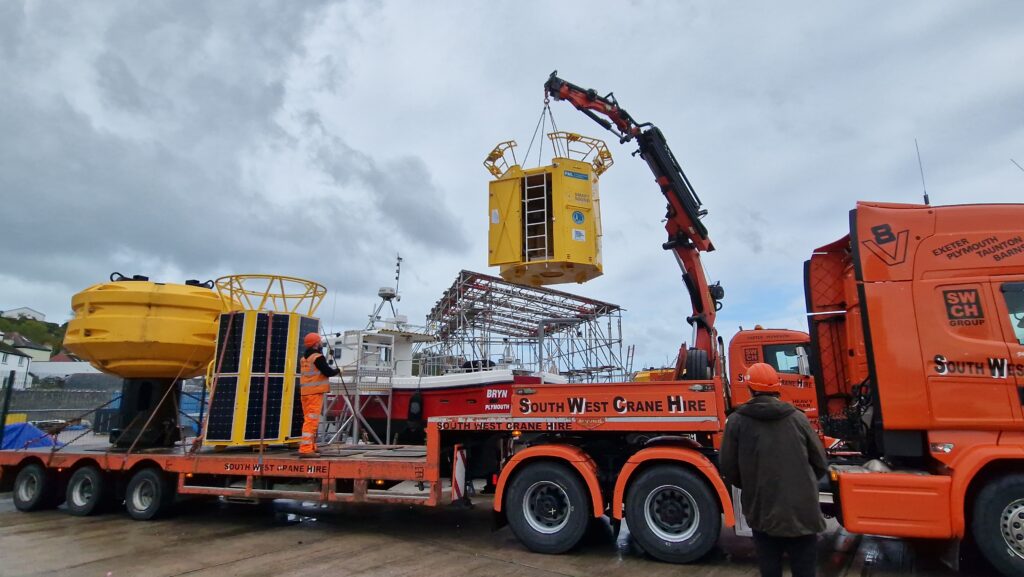
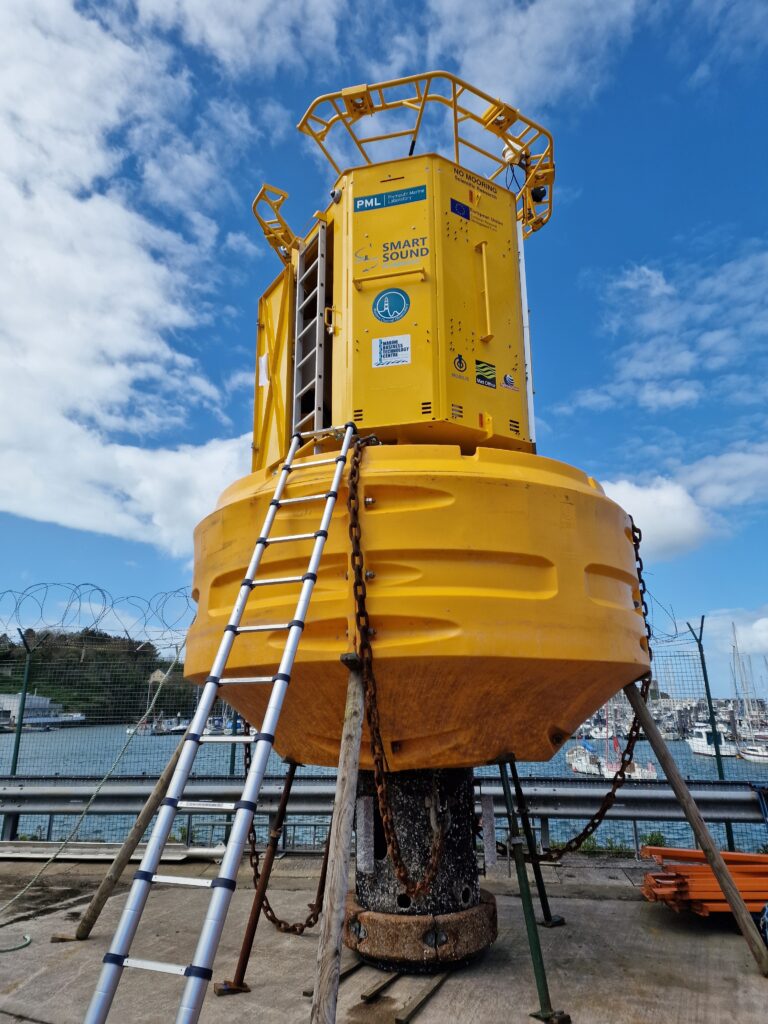
Operations at Sea Manager, John ‘Mac’ McDonald describes some of the technology on-board the buoy, and what measurements the new winch will be taking:
“The L4 buoy is equipped with an array of sensors to look at both atmospheric and marine parameters. These include sea surface temperature, salinity, oxygen, turbidity, fluorescence; air temperature, humidity, windspeed and direction and atmospheric pressure; CDOM fluorescence; nitrate and a hyperspectral radiometer. Much of this data collection requires a marinised winch system that autonomously deploys an array of sensors through the water column at specified time and depth intervals throughout the day.”
“Whilst the buoy has been in the lab to install this winch, the team have taken this opportunity to give the L4 tower a comprehensive service whilst making the upgrades. We’re looking forward to re-deploying the buoy in the coming weeks, continuing work to maintain the Western Channel Observatory (WCO) – the longest marine dataset in the world.”
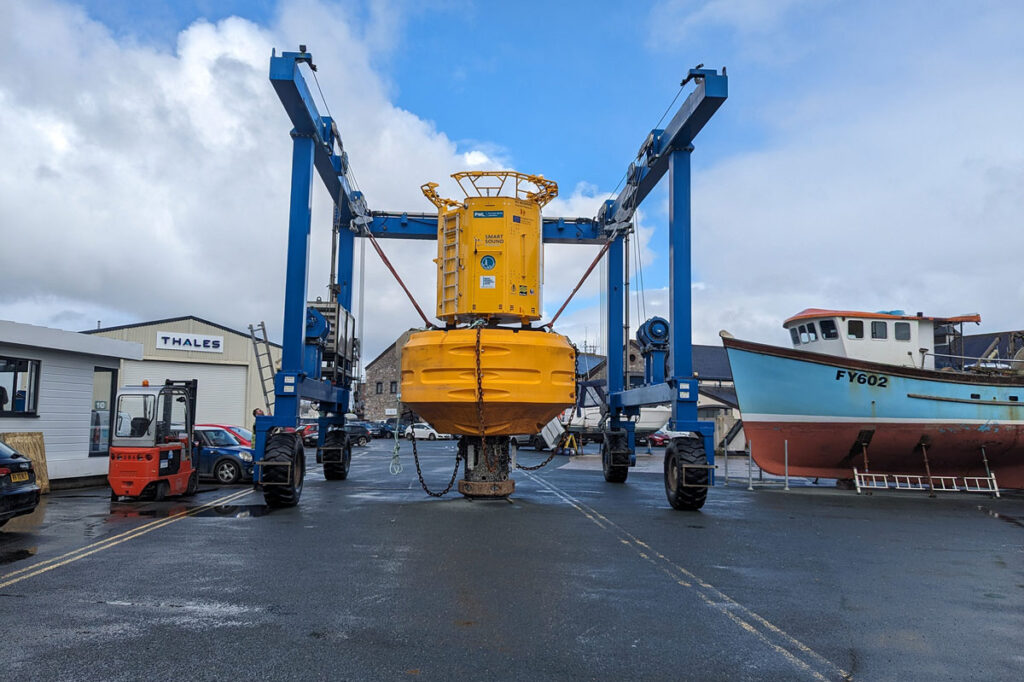
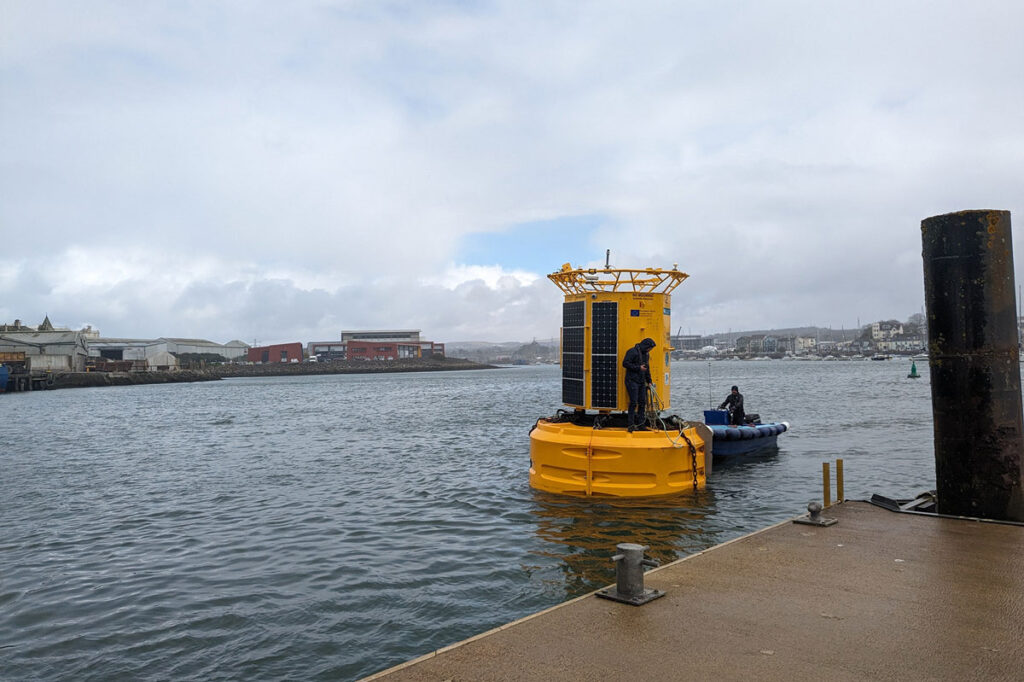
But you might notice there is another buoy pictured on the truck to Turnchapel…
Meet the Automated, in situ Plankton Imaging and Classification System (APICS) autonomous buoy..
The new APICS buoy will be used in long-term, autonomous deployments at sea within the Western Channel Observatory, situated near to the L4 buoy. APICS consists of an Imaging FlowCytobot and a Plankton Imager, two automated plankton imaging instruments that will allow scientists to monitor plankton from 10 microns (0.01 mm) to 10 mm continuously.
Images will be forwarded directly to our laboratory via an advanced high-speed communications network and automatically classified using associated machine learning software.
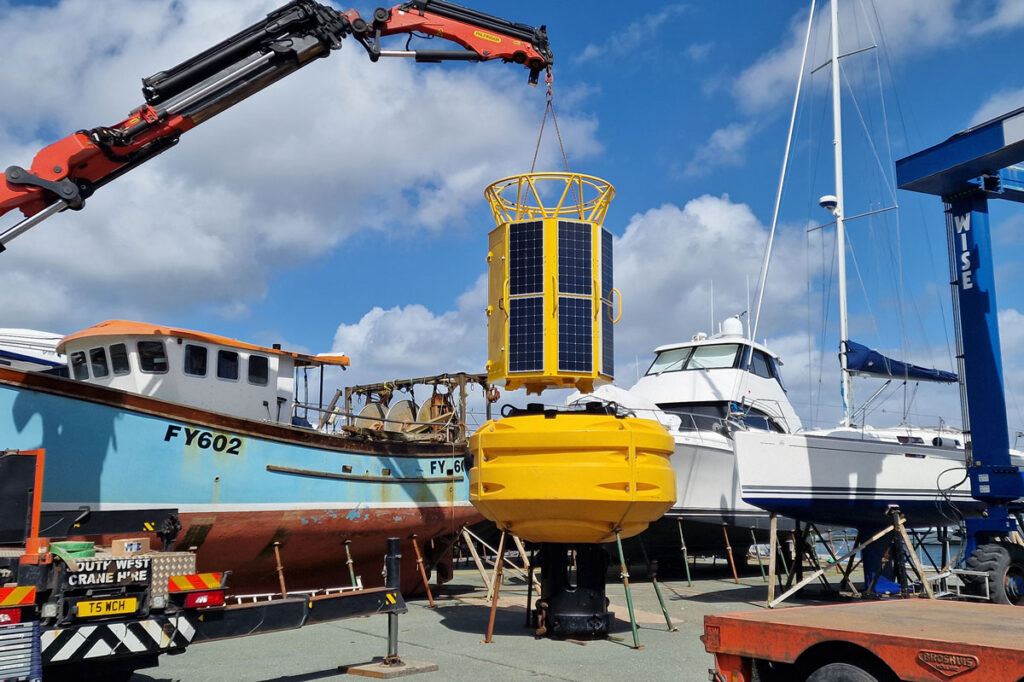
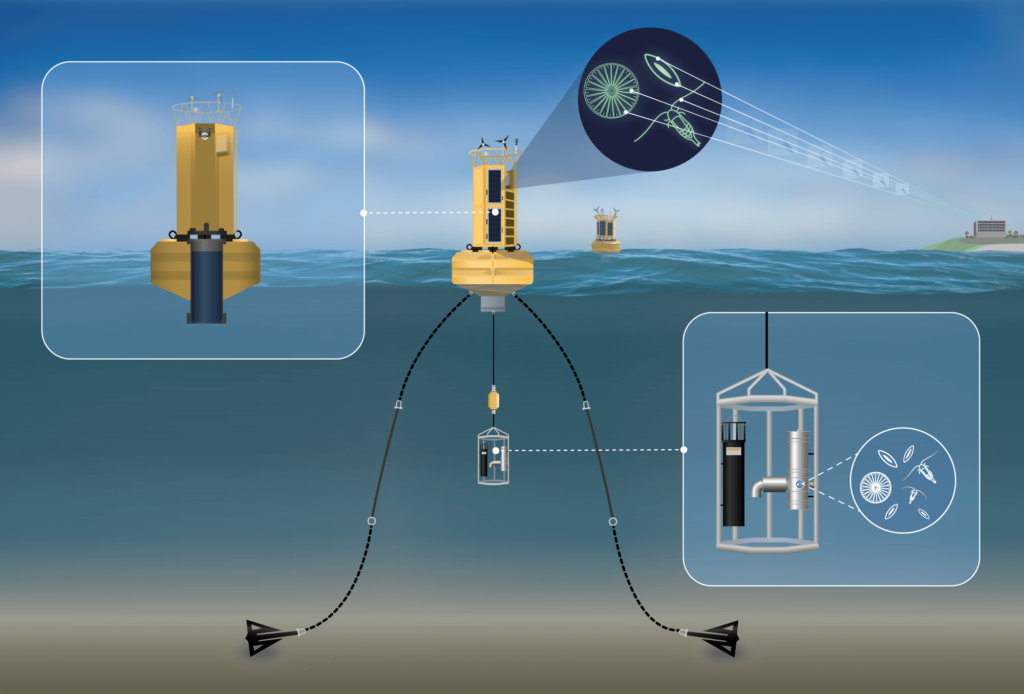
You can find out more about the APICS platform, and latest updates on the system, here >>
We will be sharing further updates on the deployment of the APICS buoy in the coming weeks, please stay tuned and follow our website and social media updates!

